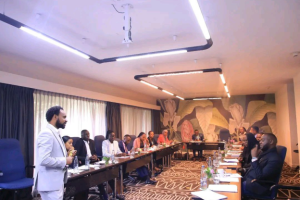
Gender relations have negatively impacted on women and girls’ position in every aspect of life, the wrong attitude of considering this important segment of the society as lesser as compared with male counterpart has not still faded out, particularly in developing countries.
In most cases, women and girls take inferior positions in the society, which is a showcase of the prevalence of the attitude, as also indicated in Gender Audit Guideline in the Ministry of Women, Children and Youth (MoWC).
This inferior position in turn is reflected in the gender stereotypes inculcated through the socialization process and the roles and responsibilities assigned to men and women in communities. The gender relations also reveal as there exists imbalance between gender and power relations. This has been reflected in a visible inequality in gender division of labor, access to resources, distribution of income and decision-making power.
The government of Ethiopia, joining hands with all stakeholders, has been working hard to lessen the negative attitudes and the ensuing results. The works have a wider scope and depth and in this short article, the writer would focus on the national strategy drawn to fight female circumcision and child marriage.
In 2013, the Ministry implemented a national strategy and action plan on harmful traditional practices (HTPs) against Women and Children in Ethiopia, with the objective to institutionalize national, regional and grassroots level mechanisms by creating an enabling environment for the prevention and elimination of all forms of HTPs, and to ensure multi-sectoral mechanisms are available to support women and children through prevention, protection and provision.
However, this working document had finished its life time and another strategy was needed that is why the Ministry with national alliance to end child marriage and FGM partner organizations and other prepared a strategy with consultation of stakeholders and different partners at all levels for the purpose to clearly stipulate the key strategies, approaches and evidence-based interventions which will be employed to achieve the national target to eliminate child marriage and FGM/C by 2025, says Seleshi Tadesse, Director of Women Mobilization and Participation Directorate at the Ministry.
Moreover, the country entered a commitment to end child marriage and FGM/C in 2025 during the 2014 London Girls’ Summit. And to fulfill the commitment, the Road-map embodies Ethiopia’s efforts to achieve SDG 5 Target 5.3 and eliminate all harmful practices-child, early and forced marriage and female “genital mutilation”. “With this overarching purpose, the National Roadmap also clearly defines the role of different actors’ accountability mechanisms for ending child marriage and FGM/C,” Seleshi added.
Uniquely, the National Roadmap creates a clear understanding of the costs required for the elimination of the practices and serves as a tool to increase government, partners and stakeholders budgets in support of ending child marriage and FGM/C and to solicit funding to support this national effort. In addition, this roadmap clearly shows the effort and the acceleration needed to end child marriage and FGM.
It also identifies five pillar strategies to coordinate efforts. The pillars help to achieve the goals of eliminating child marriage and FGM/C. The strategies are: empowering adolescent girls and their families; community engagement (including faith and traditional leaders); enhancing systems, accountability and services across sectors; creating and strengthening an enabling environment as well as increasing data and evidence generation, and use.
The Roadmap aims at achieving five outcomes which are: Empowering adolescent girls who are at risk of and affected by child marriage and FGM/C to express and exercise their choices and empowering families to protect their children from child marriage and FGM/C; increasing social action, acceptance, and visibility around investing in and supporting girls, and generating shifts in social expectations relating to girls’ education and elimination of child marriage and FGM/C; enhancing systems, accountability and services across sectors that are responsive to the needs of girls at risk of or affected by child marriage and FGM/C; enabling environment that protects the rights of girls and supports national efforts to end child marriage and FGM/C and increasing the generation and use of a robust data and evidence base on girls for advocacy, programming, learning and tracking progress.
Seleshi also said that the National Roadmap is expected to be funded through different resource mobilization mechanisms including federal and regional government sectors’ recurrent budget allocations; partner commitments for the implementation of different programs; private sector provision of technical, financial and material support; community-based initiatives to mobilize resources; and through designing and implementing other resource mechanisms such as a national lottery and tax deduction.
He further explained that the Roadmap cost is undertaken using medium-term expenditure framework principles and amounts to Ethiopian Birr 2.72 billion for a period of five year.
In order to realize its implementation, popularization and translation in different languages, resource mobilization and advocacy strategy is under preparation phase.
In achieving the stated objectives of this important roadmap, the Ministry in concert with other concerned bodies should take the commitment. Otherwise, it will be just a good paper work.
The Ethiopian Herald Friday 27 December 2019
BY MILLION FIKRU




